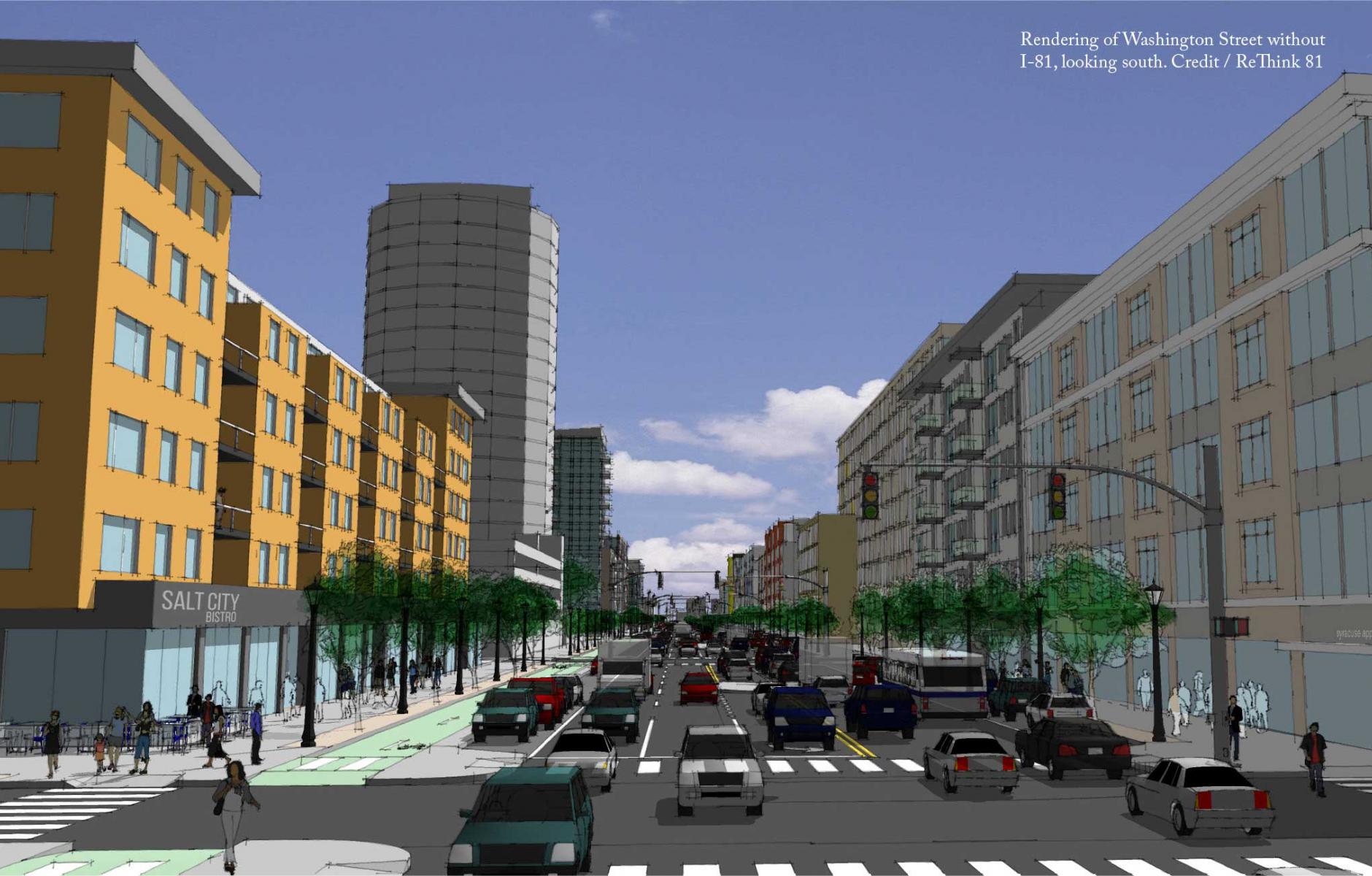
Highway transformations funded for New York cities
The recently passed New York State budget allocates major funds to further in-city highway removal in the Upstate cities of Syracuse, Albany, Rochester, and Buffalo. All projects have been highlighted by CNU in recent years.
The budget alots $1.1 billion for removal of I-81 in Syracuse—on top of last year’s $800 million, bringing the total to $1.9 billion to replace this elevated highway with a “community grid” to reconnect the city’s historic surface streets. This is a major development in the campaign to replace this section of Interstate, the only highway that has been on every CNU Freeways Without Futures list since 2008.
The first step is to make a detailed plan to take down the aging viaduct, which cuts through the heart of the city and has cast a shadow on downtown for more than half a century. That process can begin after the federal government releases an Environmental Impact Statement, followed by a 30-day comment period, expected imminently. I-81 would be rerouted around the city on the existing I-481. After the viaduct comes down, the city needs to reconnect the street grid, including building a major street along the current I-81 route to carry traffic to and through downtown.
This project could be a game-changer for Syracuse, but the city faces hurdles along the way. One is the proposed designation of the replacement thoroughfare as a “Business Loop, Qualifying Highway.” Such a designation would force highway dimensions onto the new thoroughfare, reducing the economic and social benefits of re-establishing the grid.
Fortunately, the city recently hired a new urbanist firm, Dover, Kohl & Partners, to examine how the highway will impact surrounding neighborhoods. This $550,000 study, announced a few weeks ago, will allow the city to weigh in on critical issues of design and neighborhood integration ahead of the highway transformation, building political support for human-scaled solutions.
Syracuse’s I-81 campaign has taken a decade and a half to get this far, but a proposal to transform Albany’s I-787 is moving faster. The Albany Riverfront Collaborative launched its Re-Envision Albany project last fall, and was recently recognized by CNU’s 2022 Charter Awards.
Now the state has budgeted $5 million to study the future of the highway. The Interstate and a connected stub highway cut Albany off from its riverfront and divide city neighborhoods—its tall overpasses dominate many city streetscapes. I-787 provides access for state workers who live in the suburbs to the state office complex parking facility, among other purposes.
Here’s the basic concept: “Albany Riverfront Collaborative is proposing a plan that will remove the overbuilt Exit 3 interchange. The South Mall Arterial and 787 would become boulevards that intersect with the city’s grid system. Pedestrians will be able to cross the boulevard at many points, providing uninterrupted access to the Hudson River. The train that runs between 787 will remain, and infrastructure will be built to make it safe to cross.”
The state budget also includes $100 million to transform the north section of Rochester's Inner Loop, a short freeway built around downtown, into a surface street. The East section of the Inner Loop was converted in 2016, and that has resulted in substantial redevelopment, including affordable housing.
In Buffalo, the Kensington Expressway will be getting a makeover. The budget includes up to a billion dollars to restore the Humboldt Parkway, a boulevard that included a central green space, which was taken out in the building of the expressway "without compromising the long-term capacity of the highway." How that would be accomplished is to be determined.
This article was updated on April 14.




